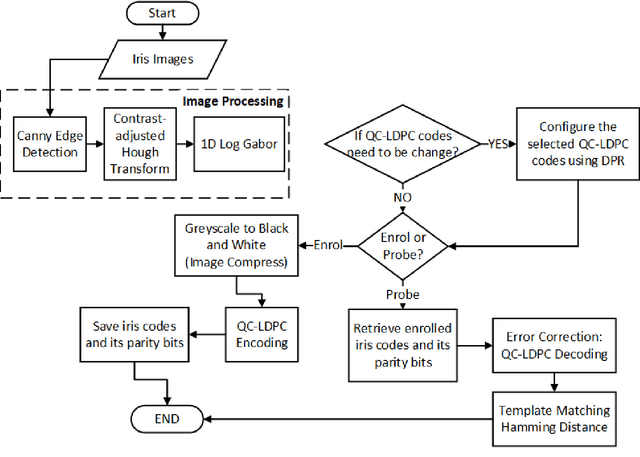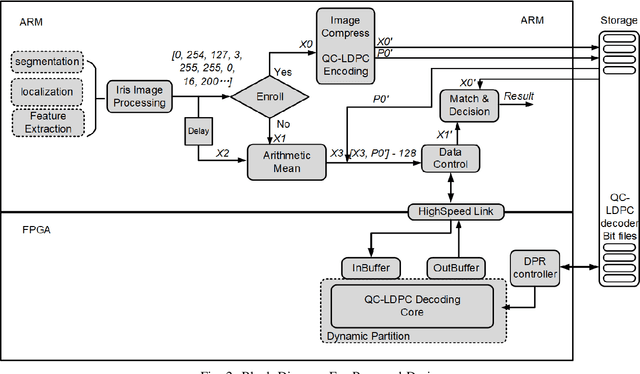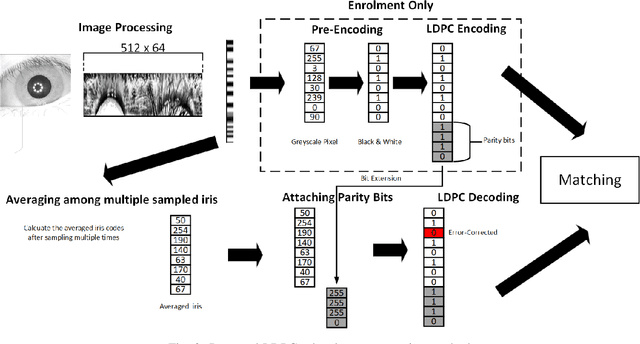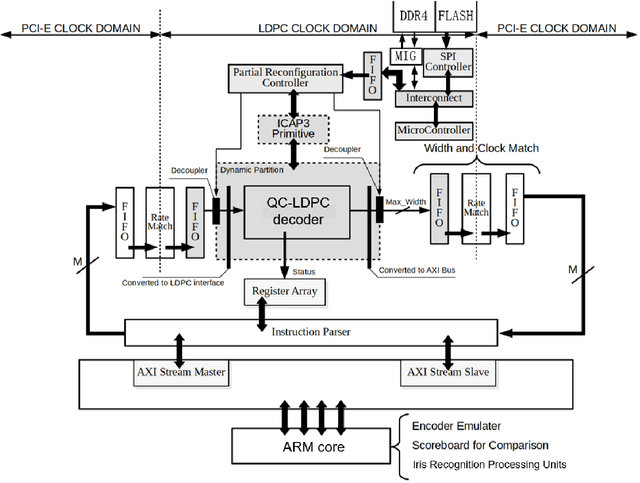Xinchao Zhong
Joint Source-Channel Coding System for 6G Communication: Design, Prototype and Future Directions
Oct 02, 2023Abstract:The goal of semantic communication is to surpass optimal Shannon's criterion regarding a notable problem for future communication which lies in the integration of collaborative efforts between the intelligence of the transmission source and the joint design of source coding and channel coding. The convergence of scholarly investigation and applicable products in the field of semantic communication is facilitated by the utilization of flexible structural hardware design, which is constrained by the computational capabilities of edge devices. This characteristic represents a significant benefit of joint source-channel coding (JSCC), as it enables the generation of source alphabets with diverse lengths and achieves a code rate of unity. Moreover, JSCC exhibits near-capacity performance while maintaining low complexity. Therefore, we leverage not only quasi-cyclic (QC) characteristics to propose a QC-LDPC code-based JSCC scheme but also Unequal Error Protection (UEP) to ensure the recovery of semantic importance. In this study, the feasibility for using a semantic encoder/decoder that is aware of UEP can be explored based on the existing JSCC system. This approach is aimed at protecting the significance of semantic task-oriented information. Additionally, the deployment of a JSCC system can be facilitated by employing Low-Density Parity-Check (LDPC) codes on a reconfigurable device. This is achieved by reconstructing the LDPC codes as QC-LDPC codes. The QC-LDPC layered decoding technique, which has been specifically optimized for hardware parallelism and tailored for channel decoding applications, can be suitably adapted to accommodate the JSCC system. The performance of the proposed system is evaluated by conducting BER measurements using both floating-point and 6-bit quantization.
An Embedded Iris Recognition System Optimization using Dynamically ReconfigurableDecoder with LDPC Codes
Jul 08, 2021



Abstract:Extracting and analyzing iris textures for biometric recognition has been extensively studied. As the transition of iris recognition from lab technology to nation-scale applications, most systems are facing high complexity in either time or space, leading to unfitness for embedded devices. In this paper, the proposed design includes a minimal set of computer vision modules and multi-mode QC-LDPC decoder which can alleviate variability and noise caused by iris acquisition and follow-up process. Several classes of QC-LDPC code from IEEE 802.16 are tested for the validity of accuracy improvement. Some of the codes mentioned above are used for further QC-LDPC decoder quantization, validation and comparison to each other. We show that we can apply Dynamic Partial Reconfiguration technology to implement the multi-mode QC-LDPC decoder for the iris recognition system. The results show that the implementation is power-efficient and good for edge applications.
 Add to Chrome
Add to Chrome Add to Firefox
Add to Firefox Add to Edge
Add to Edge